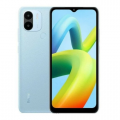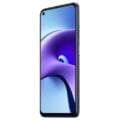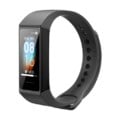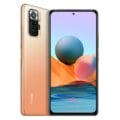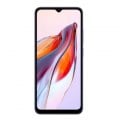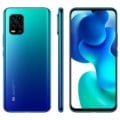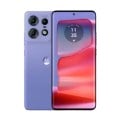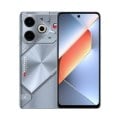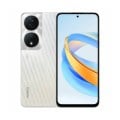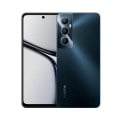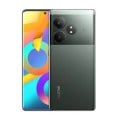Xiaomi Pad 6S Pro
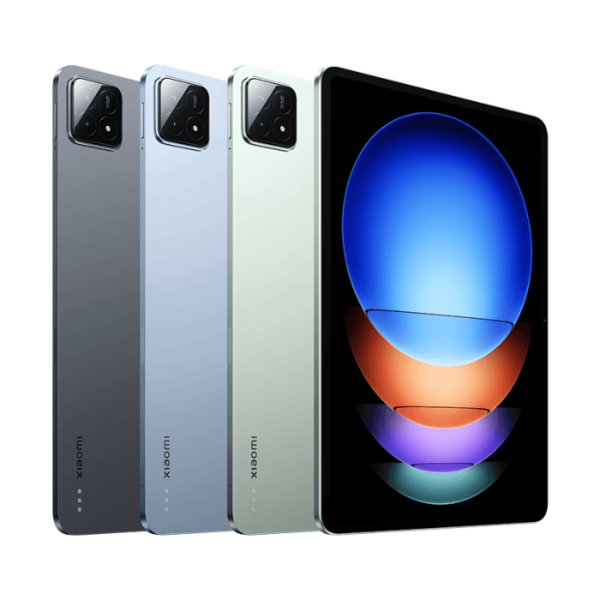

-
PROCESSOR: Qualcomm SM8550-AB Snapdragon 8 Gen 2
-
RAM: 8 GB, 12 GB, 16 GB
-
STORAGE: 256 GB, 512 GB, 1 TB
-
DISPLAY: 12.4 inches
-
CAMERA: Dual Camera
-
BATTERY: Li-Po 10000 mAh
Xiaomi Pad 6S Pro - PRICE
-
 Xiaomi Pad 6S Pro
Coupon: GIZMO, 2% Off
Xiaomi Pad 6S Pro
Coupon: GIZMO, 2% Off
View Offer
Xiaomi Pad 6S Pro has been officially released on Feb. 22, 2024.
Product Main Features:
The tablet is fueled by a non-removable Li-Po 10000 mAh battery + 120W wired, PD3.0, QC4, 45% in 10 min, 100% in 35 min (advertised). The device runs on Android 14 + HyperOS operating system and it is available in three colors: Black, Blue, and Green. It is built with a glass front (gorilla glass 5), aluminum frame, and aluminum back.
The dimension of the device is 278.7 x 191.6 x 6.3 mm and it weighs 590 grams. The size of the tablet is 12.4 inches and it comes with IPS LCD, 68B colors, 144Hz, HDR10, Dolby Vision, and 900 nits (peak). The resolution of the device is 2032 x 3048 pixels with 295 PPI.
Xiaomi Pad 6S Pro is packed with 8 GB, 12 GB, and 16 GB RAM while the internal storage options are 256 GB, 512 GB, and 1 TB. The sensors include side-mounted fingerprint, accelerometer, gyro, proximity (accessories only), and compass.
The tablet supports USB Type-C 3.2, Bluetooth 5.3, and accessory connector. Furthermore, it is powered by the Qualcomm SM8550-AB Snapdragon 8 Gen 2 processor while the GPU is Adreno 740. The device is packed with a dual-camera setup: 50 MP (wide) + 2 MP (depth) on the rear side while on the front, there is a 32 MP (wide) camera available for clicking selfies.
Xiaomi Pad 6S Pro - SPECIFICATIONS
General
-
ModelXiaomi Pad 6S Pro
-
ReleasedFebruary 2024
-
StatusAvailable
Design
-
Type Design Type called form factor refers to a mobile phone's size, shape, and style as well as the layout and position of major components of phone. There are three major form factors seen in mobile phones => bar phones, folding phones and sliding phones.Bar
-
Dimensions278.7 x 191.6 x 6.3 mm
-
Weight590 Grams
-
WaterproofNo
Display
-
Display Type Display Technology => A number of display technologies and types used in mobile phones => TFT (Thin Film Transistor), IPS (In-Place Switching), OLED (Organic Light Emitting Diode), AMOLED (Active-Matrix Organic Light-Emitting Diode), Super AMOLED (an even advanced version of AMOLED), Resistive Touchscreen (Resistive touchscreens contain two layer of conductive material with a very small gap between them which acts as a resistance), Capacitive Touchsceen (Capacitive touchscreen technology consists of a layer of glass coated with a transparent conductor)IPS LCD
-
Size12.4 inches
-
Resolution2032 x 3048 pixels
-
Display Colors Display Colors is refers to the number of different shades of colors that the screen is capable of displaying => 64K colors, 256K colors and 16 million colors, Obviously 16M is highest available range of colors and better than others.68B colors
-
Pixel Density Pixel Density (PPI) is refers to the concentration of pixels on a particular display, measured in pixels per inch (ppi). Pixel density is calculated by dividing the diagonal pixel resolution of a display by its diagonal size, higher pixel density better display quality.295 ppi (pixels per inch)
-
Touch ScreenYes
-
Display Protection Display Protection => Gorilla Glass is a special alkali-aluminosilicate glass shield with exceptional damage resistance that helps protect mobile displays from scratches, drops, and bumps of everyday use, It is always better to go for a smartphone with Gorilla Glass for that added protection and peace of mind.Corning Gorilla Glass 5
-
Features144Hz, HDR10, Dolby Vision, 900 nits (peak)
Hardware
-
CPU The main chipset of the device.Octa-core (1x3.2 GHz Cortex-X3 & 2x2.8 GHz Cortex-A715 + 2x2.8 GHz Cortex-A710 + 3x2.0 GHz Cortex-A510)
-
GPU GPU (Graphics Processing Unit) is a single-chip processor designed to rapidly manipulate and alter memory to accelerate the creation of images in a frame buffer intended for output to a display, This includes things such as lighting effects, object transformations, and 3D motion.Adreno 740
-
RAM (Memory) RAM (Random Access Memory) is a type of computer memory that can be accessed randomly, any byte of memory can be accessed without touching the preceding bytes that allows information to be stored and accessed quickly from random locations. RAM is the most common type of memory found in computer systems, smartphones, tablets and other electronic devices.8 GB, 12 GB, 16 GB
-
Internal Storage Internal Storage is a data storage space (flash memory) mostly used in smartphones, tablets and other electronic devices where operating system, apps, music, photos, videos, files and other user data Is stored.256 GB, 512 GB, 1 TB
-
Memory Card Slot Memory Card Slot is a special slot for inserting a memory card. Memory cards allow you to expand the phone's built-in memory, A memory card (sometimes called a flash memory card or a storage card) is a small storage medium used to store data such as text, pictures, audio, and video, for use on small, portable or remote computing devices such as mobile phones, mp3 players, digital cameras.No
-
Sensors Sensors are electronic components that detects and responds to some type of input from the physical environment. The specific input could be light, heat, motion, moisture, pressure and location, The output is generally a signal that is converted to use in computing systems, a location sensor, such as a GPS receiver is able to detect current location of your electronic device.Side-mounted fingerprint, accelerometer, gyro, proximity (accessories only), compass
Software
-
Operating System OS => Every computer system run on a base software called Operating System (OS). Operating System controls all basic operations of the computer (such as smartphone, PDAs, tablet computers and other handheld devices). The Operating System allows the user to install and run third party applications (apps), apps are used to add new functionality to the device.Android 14
-
User Interface UI or user interface of a device is the look and feel of the on-screen menu system. How it works, its color scheme, how it responds to button presses, all of these things are part of the user interface.HyperOS
Camera
-
Rear Camera Camera is able to capture photographs and usually videos, The most important characteristics of a camera are the resolution (measured in megapixels), lens focus type (fixed or automatic), higher megapixel cameras are known to capture higher quality photos, but not always a good measurement of the photos quality.50 MP (wide) + 2 MP (depth)
-
Image2160p
-
Video4K@30/60fps, 1080p@30/60fps
-
Flash Flash Light => There is commonly two types of flash lights are used in camera mobile phones, LED Flash (LED flash offers lower power consumption with drive circuitry that takes up very little room, LEDs can be strobed faster than any other light source), Xenon Flash (xenon flash produces an extremely intense full-spectrum white light for a very short duration)Yes
-
Front Camera32 MP (wide)
Connectivity
-
Wi-fi Wi-Fi is a popular wireless networking technology using radio waves to provide high-speed network connections that allows devices to communicate without cords or cables, Wi-Fi is increasingly becoming the preferred mode of internet connectivity all over the world.Wi-Fi 802.11 a/b/g/n/a/6/7, dual-band, Wi-Fi Direct
-
USBType-C 3.2, accessory connector
-
NFC NFC (Near field communication) is a set of standards for smartphones and similar devices to establish peer-to-peer radio communications with each other by touching them together or bringing them into proximity, usually no more than a few inches.Yes (file transfer only)
-
Wireless Charging Wireless Charging (Inductive Charging) uses an electromagnetic field to transfer energy between two objects. This is usually done with a charging station. Energy is sent through an inductive coupling to an electrical device, which can then use that energy to charge batteries or run the device.No
-
Headphone JackNo
Battery
-
Capacity Battery CapacityLi-Po 10000 mAh + 120W wired, PD3.0, QC4, 45% in 10 min, 100% in 35 min (advertised)
-
PlacementNon-removable

